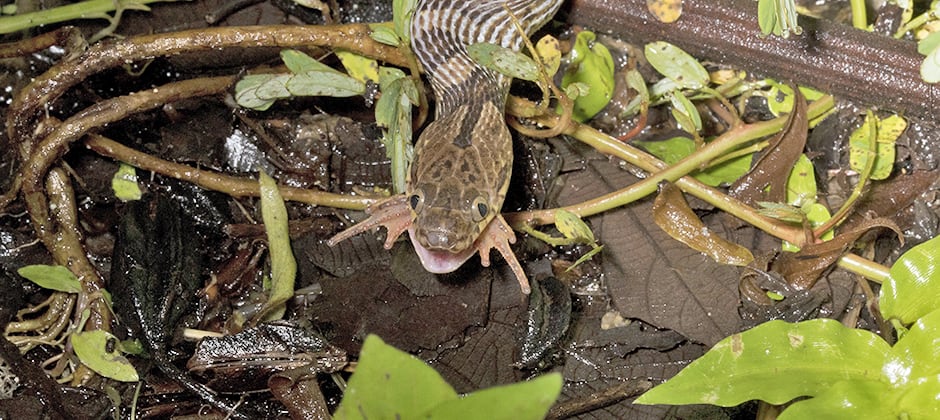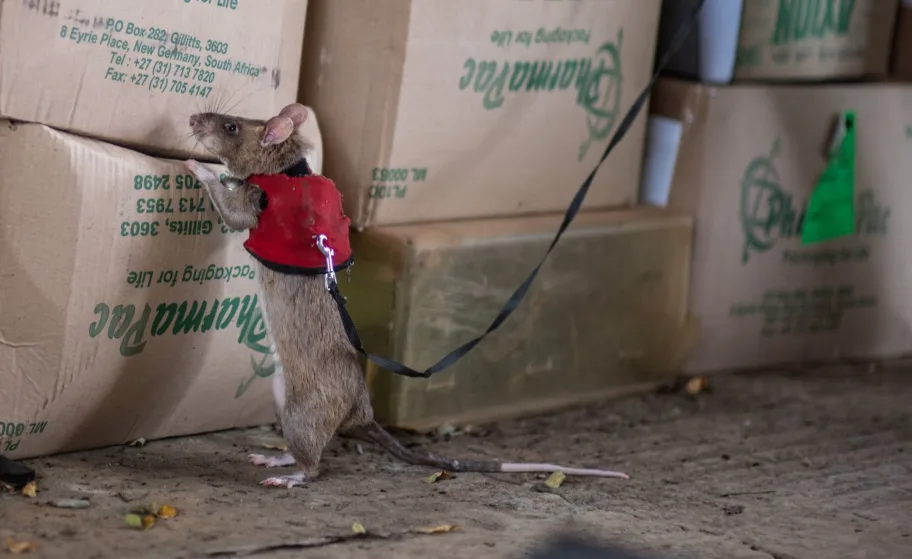Share this article
Wild Cam: Snakes suffer as chytrid wipes out frogs
A fungal disease that has wiped out entire populations of amphibians across the world is also affecting snake diversity — particularly among snakes that rely on frogs or their eggs for food.
Research shows that both snake abundance and snake species diversity have dropped in some areas where amphibians have been hit hard by chytrid fungus.
“We knew there would be huge cascades through the food web. We weren’t sure how soon, or what exact species would be affected,” said Karen Lips, a professor of biology at University of Maryland and one of the co-authors of a study published recently in Science.
Enlarge
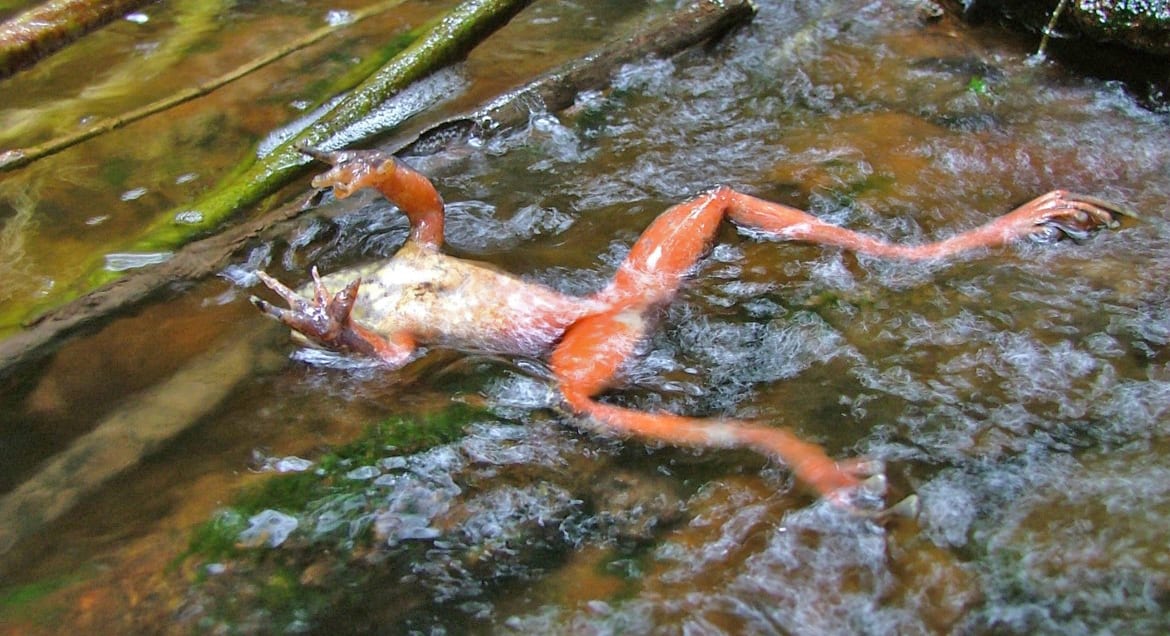
Forrest Brem
Chytrid disease is caused by the fungal pathogen Batrachochytrium dendrobatidis, or Bd, which attacks keratin in amphibian bodies. The disease has impacted over 500 amphibian species around the world, including some that scientists know little about. This frog, which Lips found dead from chytrid in Panama in 2004, is from a species that biologists have not yet described.
Lips has witnessed the deadly power of the fungus firsthand. She was conducting fieldwork at a remote site in the mountains of Costa Rica in 1991-1993 when the disease struck. At the time, no one knew what was causing so many frogs to disappear.
“It was truly one of these mysterious declines,” she said.
Enlarge
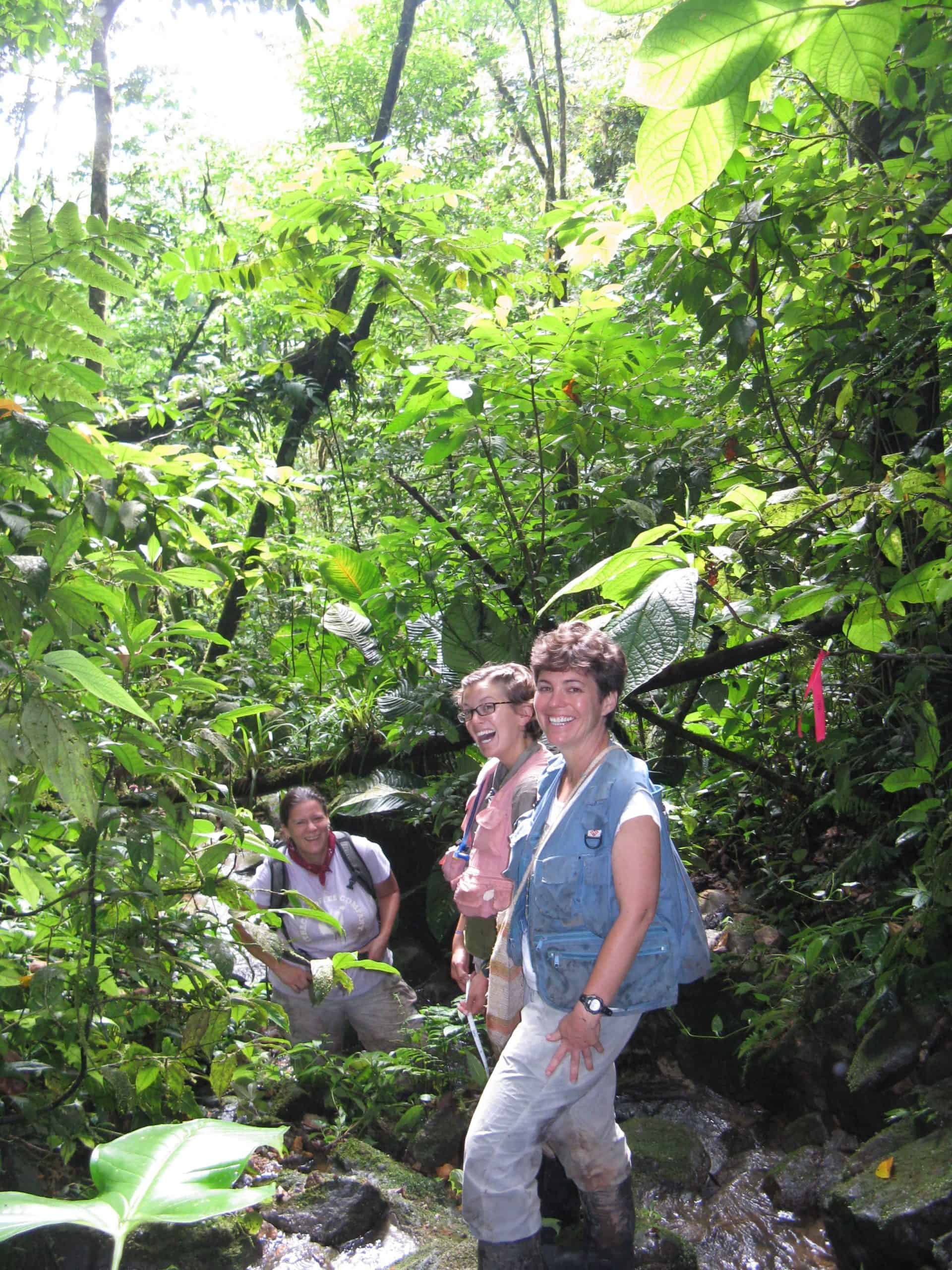
Rebecca McCaffery
In 1992, Lips set up a new research site just across the border in western Panama, where she conducted population transects to survey amphibians. The same thing she had witnessed in Costa Rica had happened there, too. About 50 dead frogs — representing several different species — turned up at the site in 1996-1997. Lab tests showed chytrid was the culprit.
In 1998 Lips, pictured on the right with colleagues Cora Johnston (middle) and Kelly Zamudio (left), set up a new set of transects in a national park near the town of El Cope, in central Panama. Lips and colleagues continued monitoring of amphibians and reptiles as well as starting a new project on how amphibian losses affected the Ecosystem ecology of tropical streams.
Enlarge
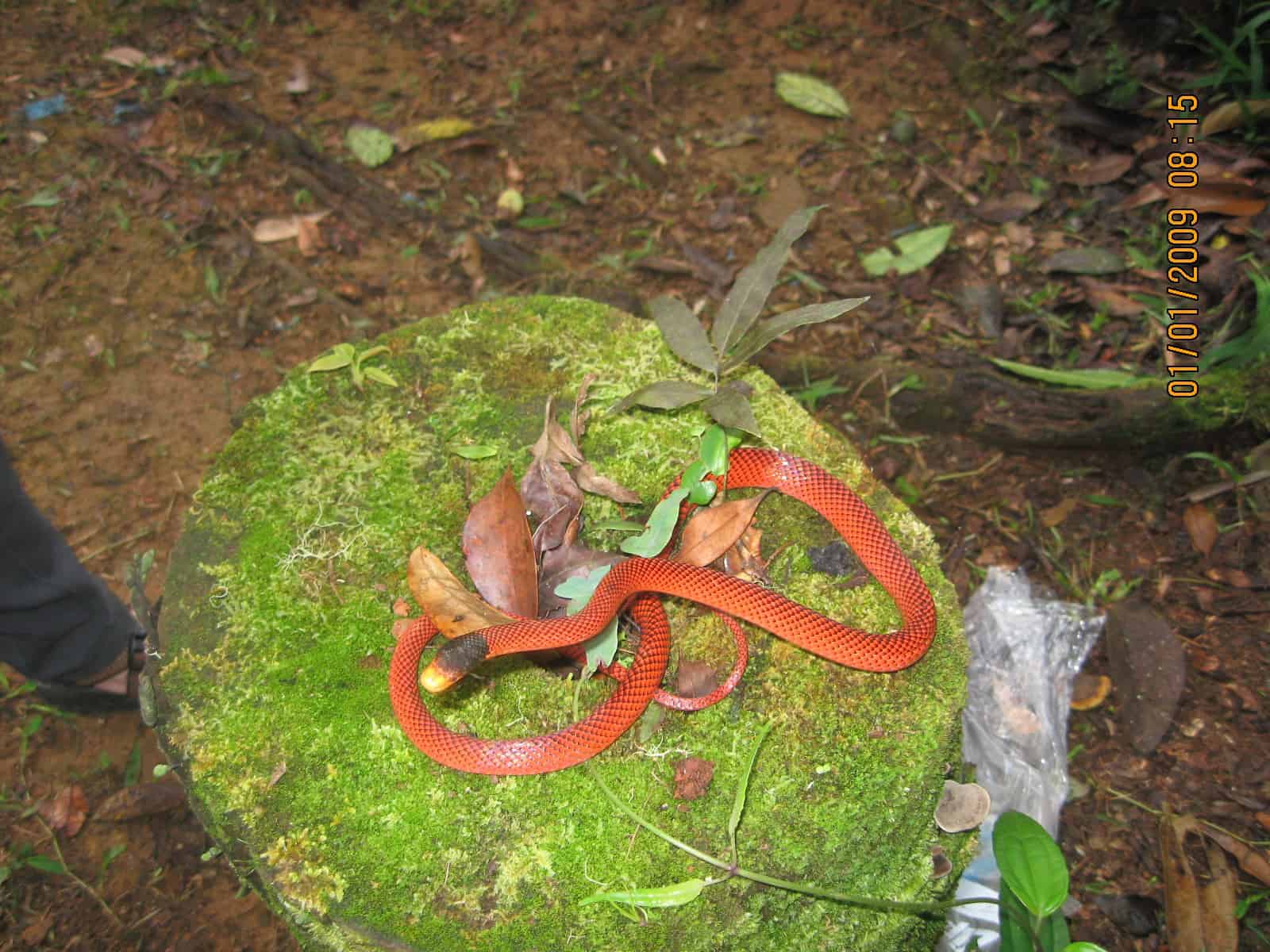
Kelly Zamudio
The snakes proved hard to monitor. Over 100 snake species occupy the study area, Lips said, but the researchers rarely see them. After more than 20 years, they still discover new species they hadn’t known were there.
Enlarge
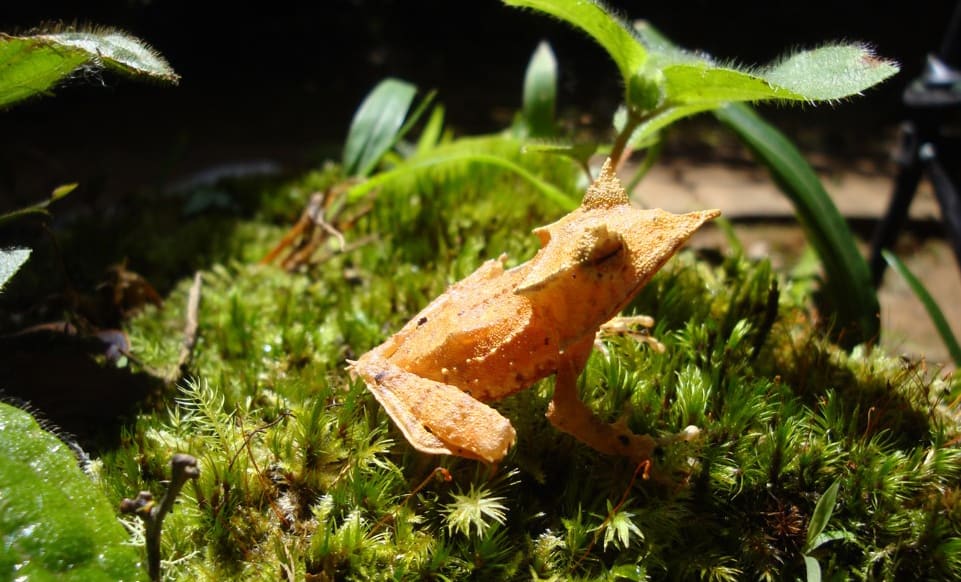
Kelly Zamudio
Frogs, like this banded horned treefrog (Hemiphractus fasciatus), live in many different environments. Some reside high in the tree canopies while others are lower on the trunks and branches.
Enlarge
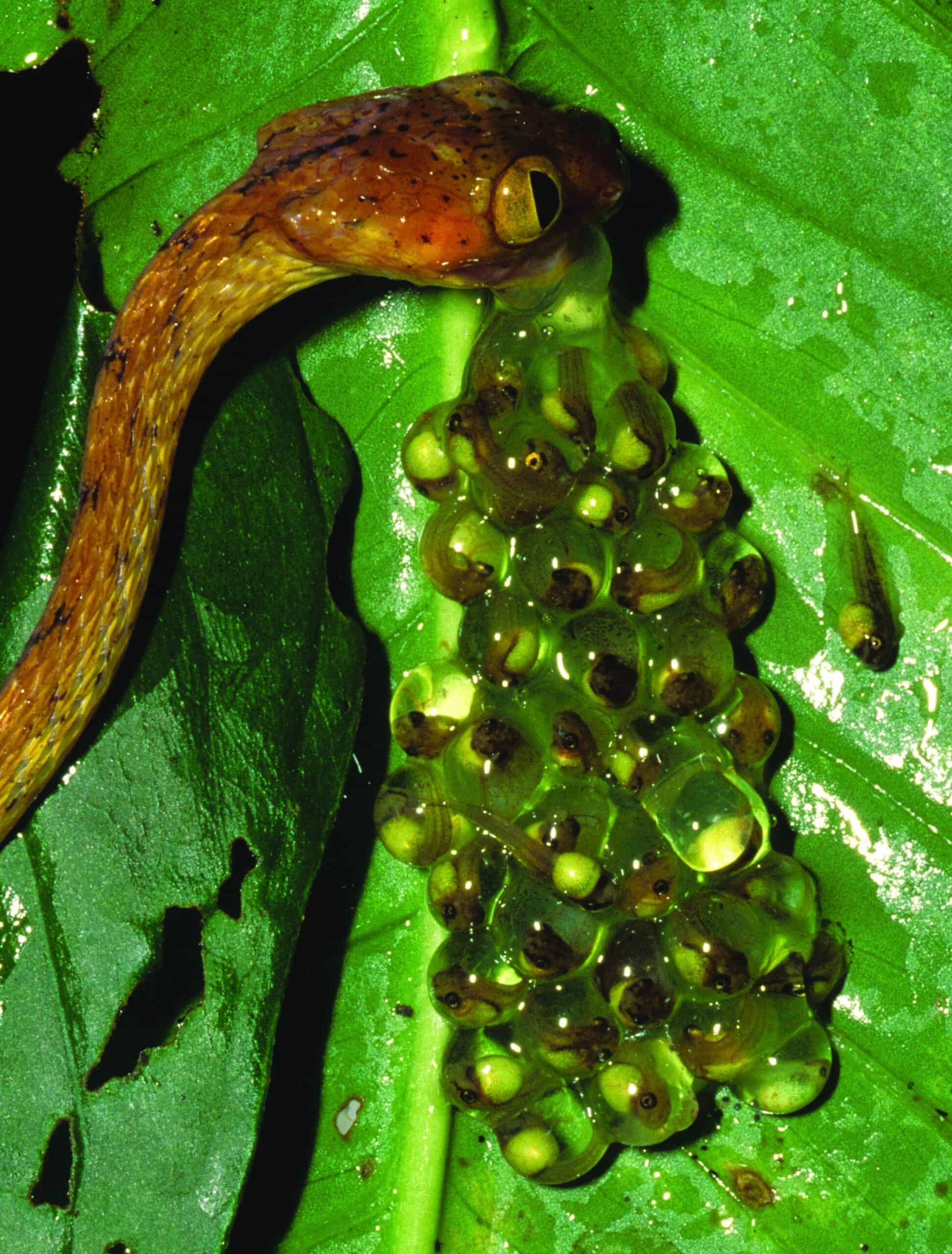
Karen Warkentin
Some live in waterways and ponds while others spend much of their time underground. Wherever there are frogs, there are snakes that specialize in eating them or the eggs they lay, like this tiny blunt-headed tree snake (Imantodes inornatus), though this snake was not from the study site at El Cope
“There are frogs and snakes above you, below you, next to you,” Lips said.
Enlarge
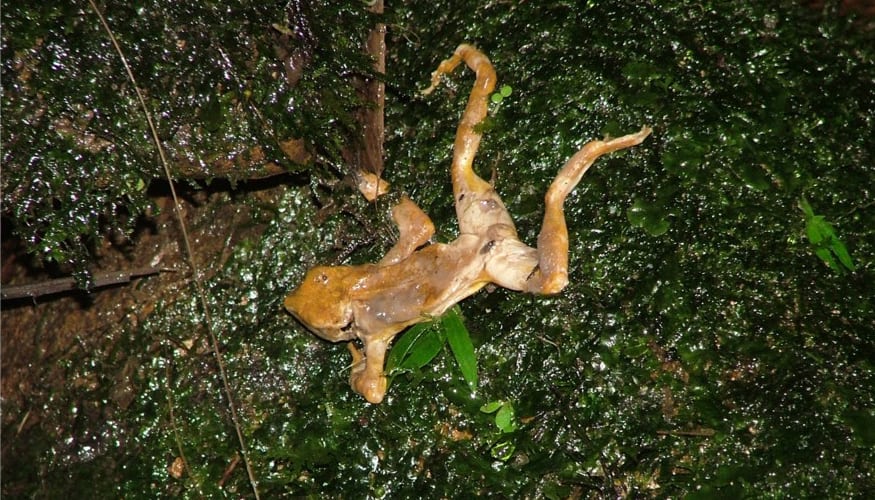
Forrest Brem
Chytrid struck the new study site in 2004, causing a decline in frog abundance and species diversity, including the extirpation of the Panamanian golden frog (Atelopus varius) in the area, one of which is pictured here dead. In a study published earlier, Lips and her colleagues describe how they identified at least 74 species of amphibians before the disease came, but were only finding 32 species by 2010.
Enlarge
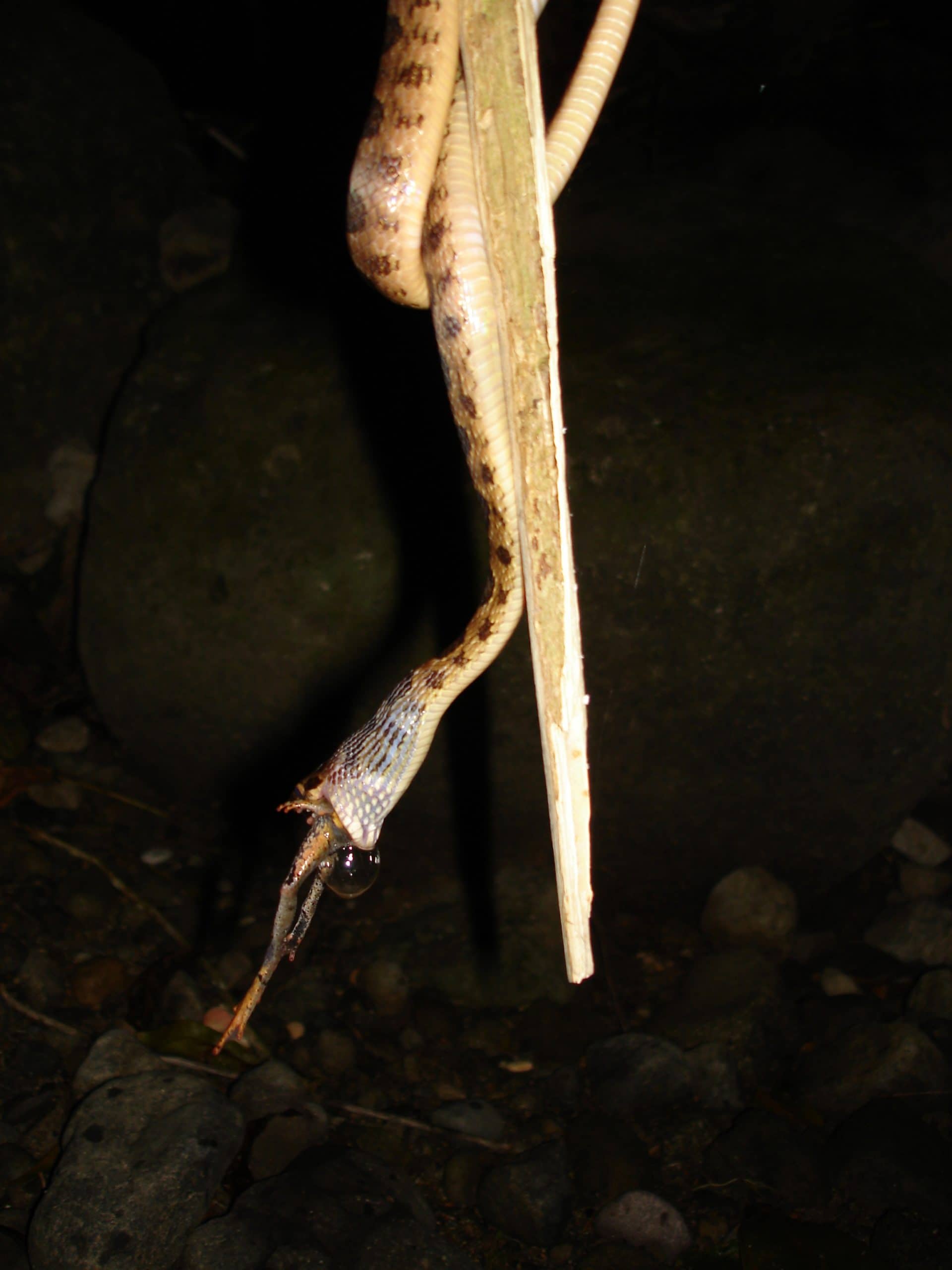
Kelly Zamudio
It didn’t take long before effects began to appear among snakes. Out of 31 species they observed before 2004, the researchers saw only 20 species in the post-chytrid years. One species that declined was the Leptodeira, pictured here, which specializes in eating frogs.
“A lot of the snakes that disappeared are what we called the goo-eaters, because they like to eat frog eggs or slugs,” Lips said. “These are all snakes that are super abundant at the site, but unless you go out and walk streams in the tropics, most people don’t see these guys.”
Enlarge
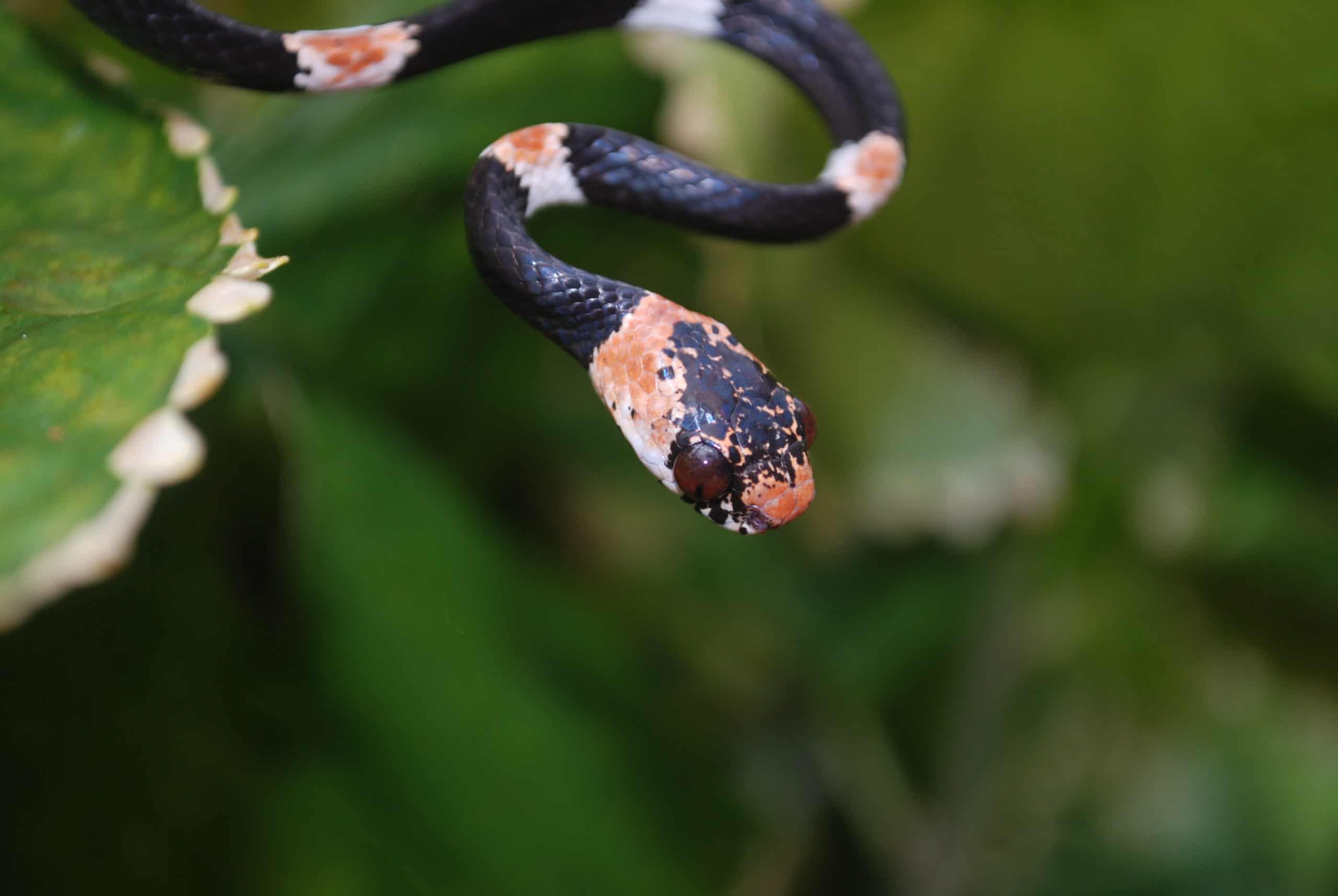
Ed Kabay
Lips said that while they could no longer find some species in the area, due to their cryptic nature, she can’t be completely sure they were extirpated.
But researchers also noticed other effects. The species they did find weren’t as common in some cases, and in four species, Lips also said that they found snakes were in poorer body condition than in pre-chytrid surveys. Species they knew to specialize in preying on frogs or their eggs were particularly affected.
The frogs’ disappearance is likely to have wide-ranging consequences, Lips said. “Massive widespread effects of the loss of frogs and tadpoles on the stream ecosystem” could include murkier waterways, she said, since many frogs and tadpoles eat algae. That could make conditions less suitable for mayflies, which are prey for species like birds or bats. Other pests, like blackflies, might increase in abundance.
Enlarge
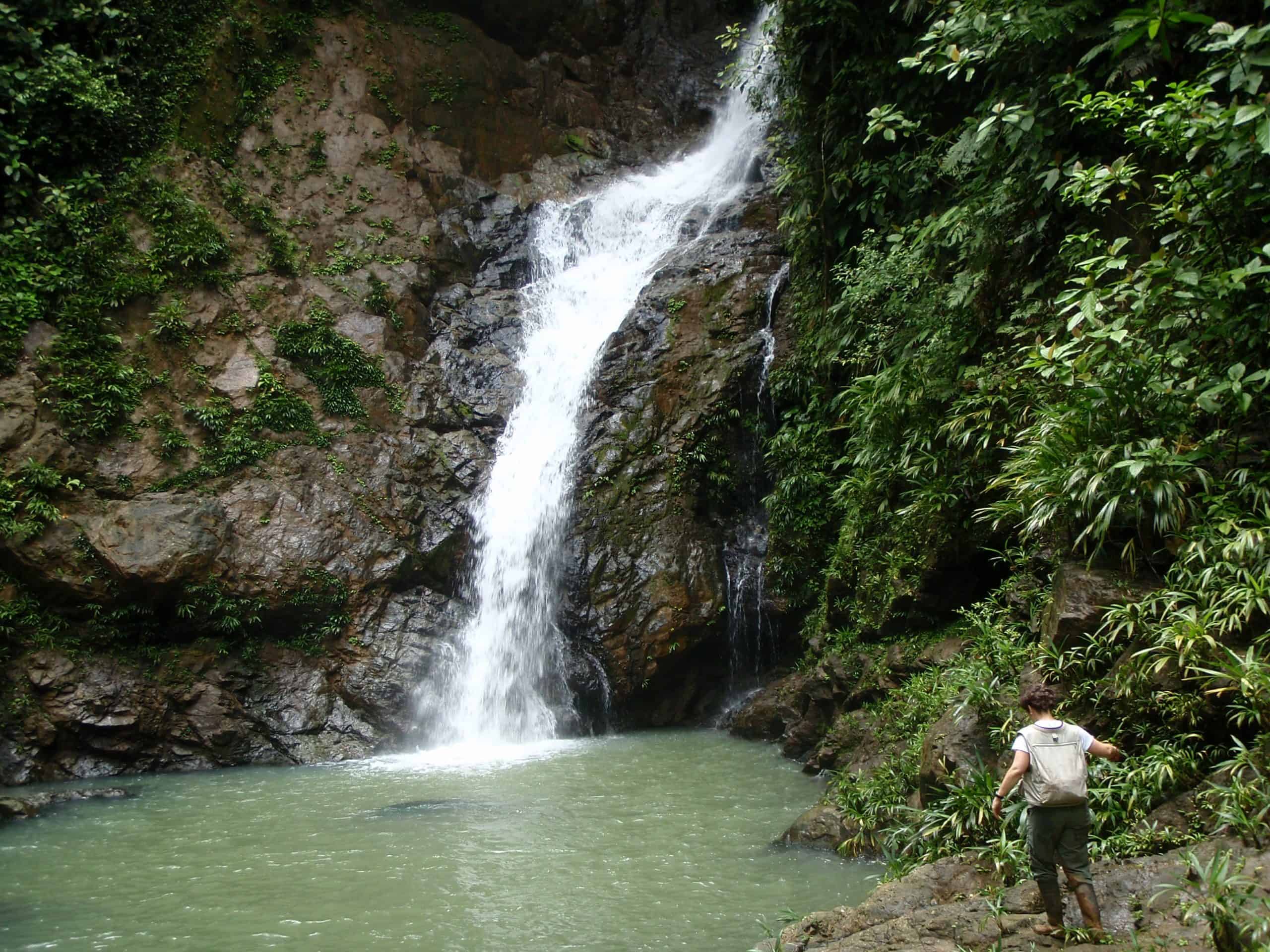
Grace DiRenzo
The amount of nutrients produced in the water can change, which causes a number of cascading effects on aquatic ecosystem.
“We basically showed that when the frogs disappeared, it had all these impacts on water quality, the algae grown in the streams, aquatic invertebrates like mayflies,” she said. “Everyone that lives downstream form these remote mountain parks gets affected as well,” Lips said.
These types of changes are likely occurring wherever frogs disappear, since snakes or other creatures rely on amphibians for food, Lips said. However, evidence of these changes are hard to quantify since not every researcher is in a place before and after chytrid comes through the area.
This photo essay is part of an occasional series from The Wildlife Society featuring photos and video images of wildlife taken with camera traps and other equipment. Check out other entries in the series here. If you’re working on an interesting camera trap research project or one that has a series of good photos you’d like to share, email Joshua at jlearn@wildlife.org.
Enlarge
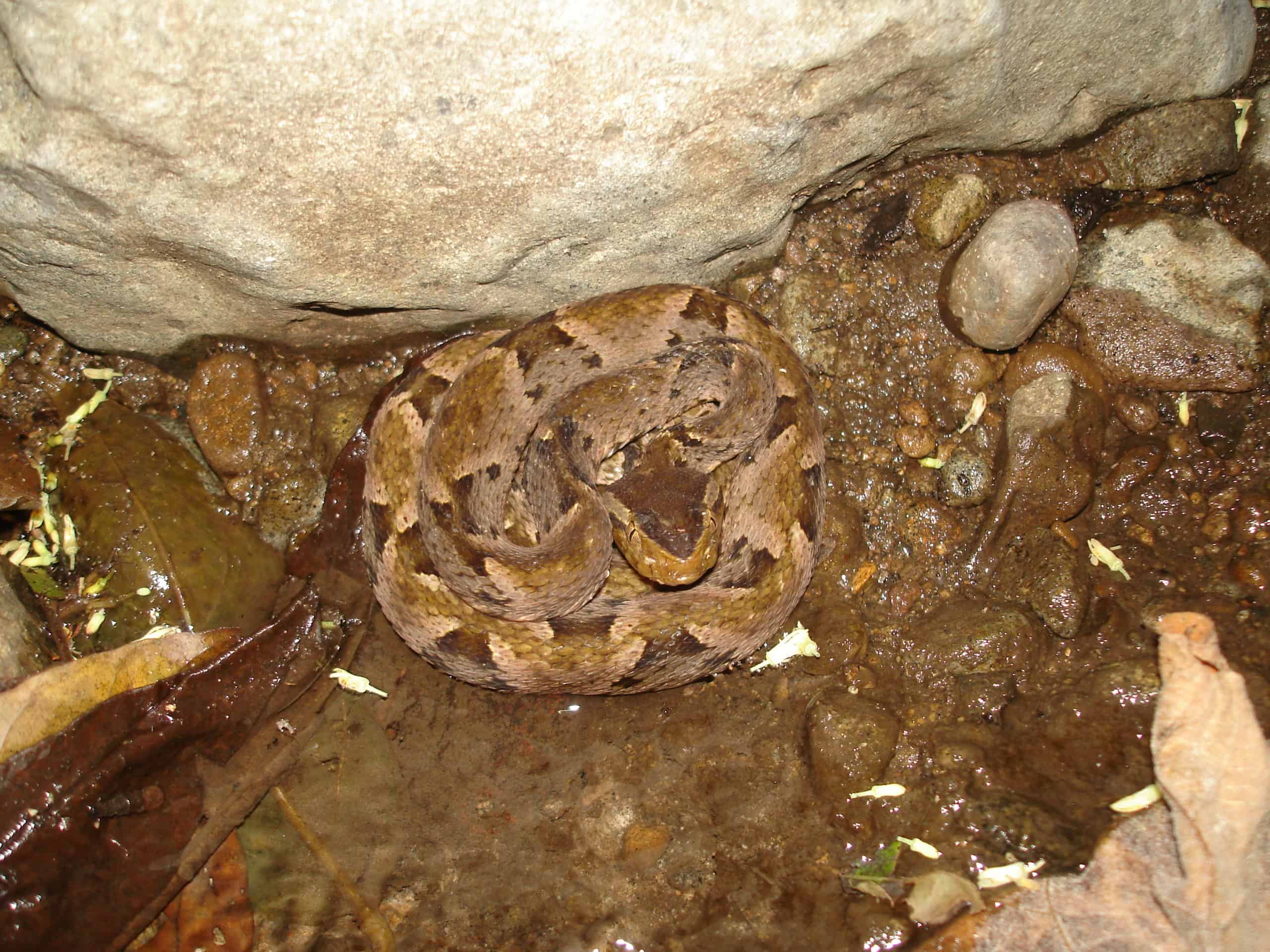
Kelly Zamudio
Header Image: A cat-eyed snake eats a toad. ©Karen Warkentin



